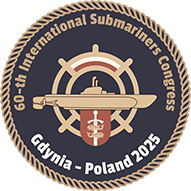The number of currently registered participants is [wbcr_php_snippet id=”42″] per.
MAIN EVENTS OF THE CONGRESSThat's not all, more events on the program page
Tri-City and vicinity

The Tri-City is an extraordinary complex of three different urban organisms united in their unique location by the Bay of Gdańsk and separated from the rest of the world by post-glacial moraine hills. 1000-year-old Gdańsk, the capital of the Pomorskie Voivodship, with its extraordinary architectural and cultural assets borders Sopot, Poland’s most famous seaside resort and spa, which in turn borders Modernist, cutting-edge Gdynia. The three cities are connected by a fast urban railway line and offer shopping, leisure and culture x 3. With its excellent land, air and sea transportation links, the Tri-City has a wealth of attractions and a one-of-a-kind atmosphere.
GDANSK
There is only one city like Gdańsk. Others can be only similar. It’s extraordinary location and over one thousand years of history distinguish Gdańsk and give it a robust and established position in Europe.
SOPOT
Sopot is a well-known seaside resort and spa. Some say that they who have never been to Sopot in the summer don’t know what a seaside holiday is. Sopot is one of the cities with the highest living standard in Poland.
GDYNIA
When Poland regained its independence in 1918, it did not immediately get a long awaited access to the sea. The ceremony of Poland’s marriage to the sea only took place on 10 February 1920 when the Treaty of Versailles was ratified.
MALBORK
On the right-side bank of the River Nogat in Malbork there is a castle, the largest one in the world in terms of area size. It was built in several stages from 1280 until the mid-15th century by the Teutonic Order.
Do not miss this unique opportunity!
Join us in Gdansk
The Polish Submariners Association & ISA

The Polish Submariners Association, founded in Gdynia in 1981, brings together the fans of this particular form of naval arms. The Association’s members include both active and former submarine sailors as well as submarine fans. Since the very beginning, the Association’s chief aim has been to propagate the history and traditions of Polish submarines, their military achievements, specificity and uniqueness of service.
The inauguration meeting that established the Polish Submariners Association took place on 2 July 1981. As an autonomous constituency, the Association became part of the Maritime League (now the Maritime and River League), reactivated on 22 April 1981, and remains in this organisation as a Club of the Maritime and River League.
The first International Submariners Association was initiated by two submarine commanders and World War II veterans: Capitaine de fregate (Frigate Captain) Jean Blanchard (France) and korvettenkapitän (Corvette Captain) Adalbert Schnee (Germany). With the strength of their character, both sailors, who well knew the horror of military operations at sea, overcame wartime enmity and hatred to become friends. They laid out the foundations for the loyalty to the maritime ideals in the International Submariners Association. The first meeting between French and German submariners took place in Paris in 1962. The following year, also in Paris, came a meeting of submariners from France, Germany and Italy. Soon the organisation was joined by Austria, United Kingdom and United States. Russia joined the ISA in 1999. In 2000, Poland, Chile, Norway and Ukraine joined in. In 2001, Israel and Argentina joined the ranks of the Organisation, with Australia, and then Peru, Turkey, Greece, Japan, Canada and Croatia joining in 2002.
The Polish Submariners Association organised its first International Submariners Congress (the 45th) in Gdynia in 2008. The Congress was attended by over 300 delegates from 13 countries.


